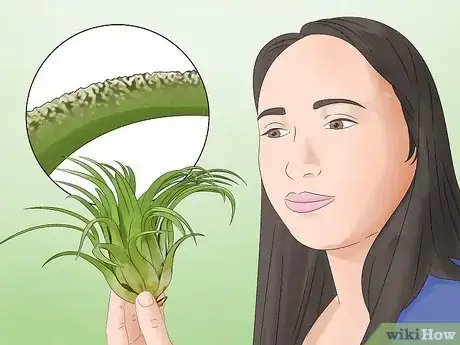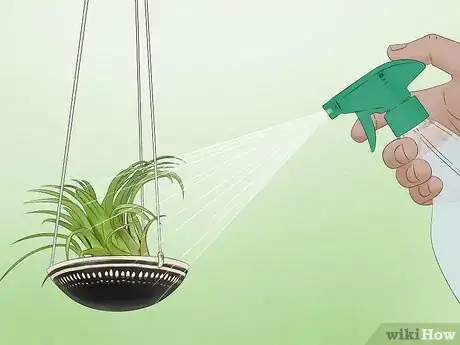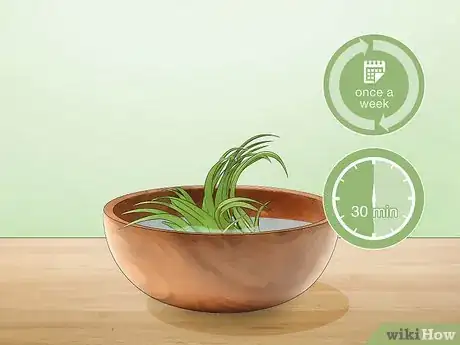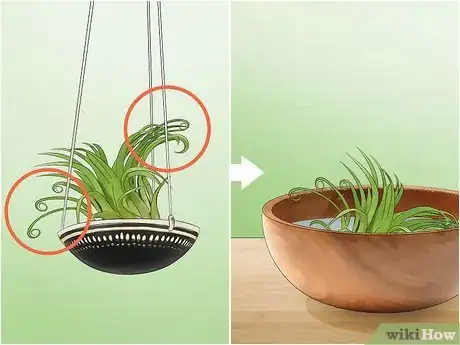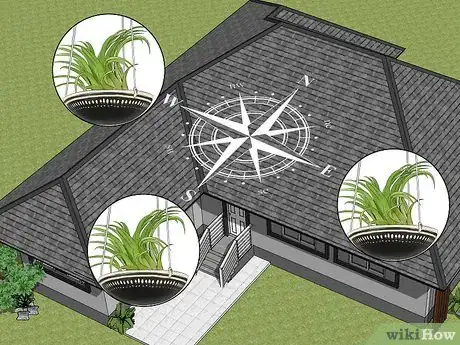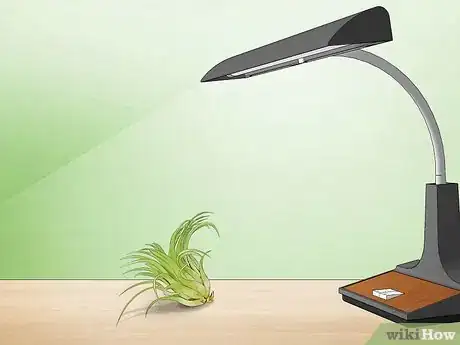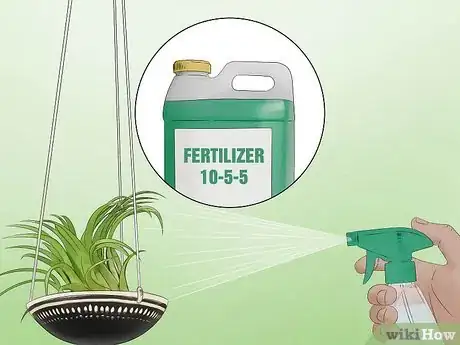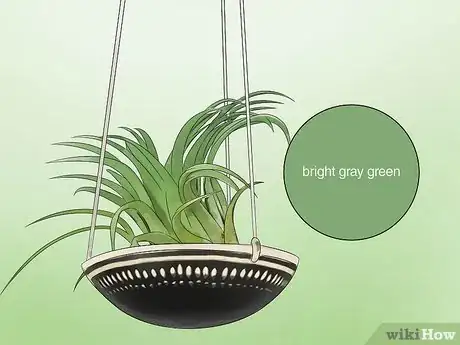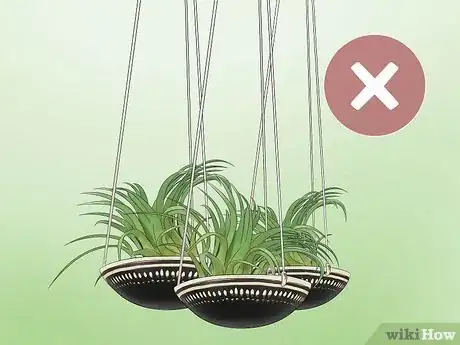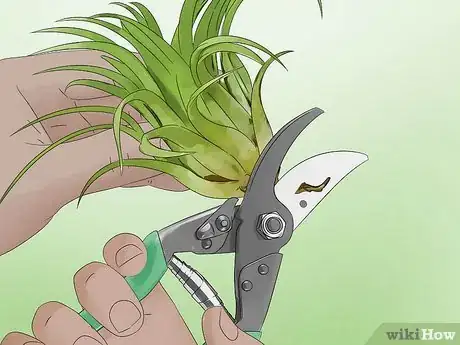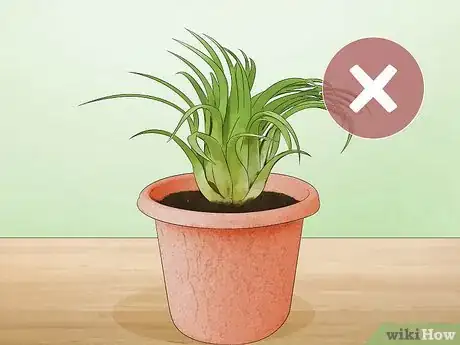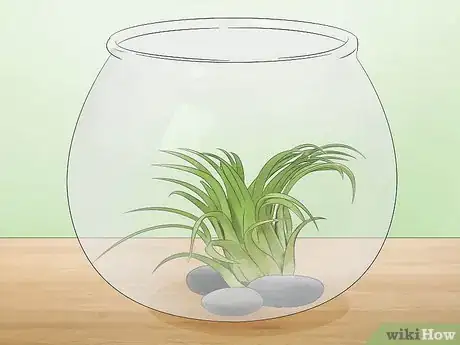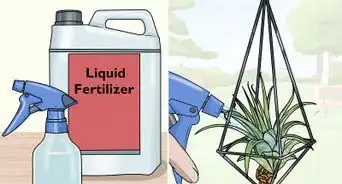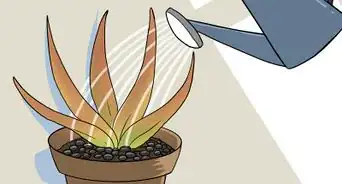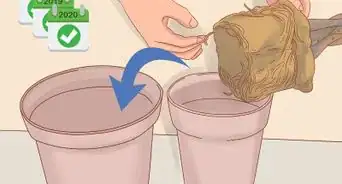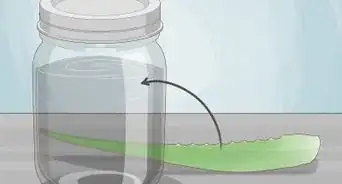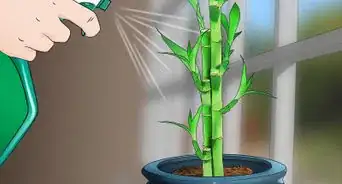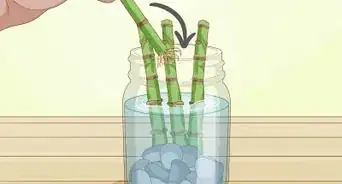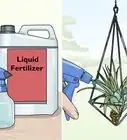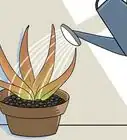This article was co-authored by Harmony Corelitz. Harmony Corelitz is a Plant Specialist and the Ecommerce Manager at Crimson Horticultural Rarities, Inc, a boutiue offering rare plants, flower arragements, and handmade goods. Harmony grew up helping her parents run their family business in plant maintenance and interior plantscaping. Harmony specializes in indoor plant care and interior plant design. Prior to her workwith Crimson Horticultural Rarities, she started her pop-up plant and vintage home goods shop called Younger Child and helped her former employer, Plants and Friends, grow and expand to two locations. She holds a BA from the University of San Francisco.
There are 11 references cited in this article, which can be found at the bottom of the page.
wikiHow marks an article as reader-approved once it receives enough positive feedback. This article received 11 testimonials and 100% of readers who voted found it helpful, earning it our reader-approved status.
This article has been viewed 84,292 times.
Air plants, known as Tillandsia (Tillandsia spp.), cannot live on air alone. They are epiphytes that grow naturally in cracks in rocks and on trees and they do not need soil. They grow best in USDA Hardiness Zones 8 to 11, so they can survive temperatures that dip to 10 degrees F (-9.4 degrees C). They require a bright, sunny location but that requirement is easily met, even in a house that does not have a sunny window. These are fun, easy-to-grow houseplants but you have to know how to water and feed them.[1]
Steps
Giving Your Plants Water and Light
-
1Find your plant’s discs. Air plants have tiny silver discs or scales all over their leaves. If you look closely at an air plant in bright light, you will see the discs shimmering. These discs absorb moisture and nutrients for the plant.[2]
-
2Water air plants every two to three days during spring, summer and fall. Spray a fine mist until the water drips from the leaves. Use room-temperature water to avoid stress that would be caused by cold tap water. Cold stress could cause the leaves to turn brown and brittle.[3]
- Mist them in the morning so they will be dry or nearly dry by the end of the day.
- Water them less often in the winter during their dormant season.
Advertisement -
3Give your plant a heavy soak once a week, instead of watering it lightly every 2 to 3 days. They can also be watered by soaking the entire air plant in a sink or bowl of water for 30 minutes once a week. With this method, the air plants should be shaken gently after soaking to remove excess water.[4] [5]
-
4Help your plant out if it is not getting enough water. If the air plant’s leaves curl or roll up, it is not being watered often enough and has become too dry. Soak it in a bowl of room-temperature water overnight. Take it out of the water the next morning, shake it off and put it back in its place.[6]
- Mist it or soak it more often to prevent it from drying out again.
-
5Set the air plant near an east-, west- or south-facing window if possible but not in direct sunlight. You can care for an air plant indoors by setting it directly in front of the window if a sheer curtain is hung between the plant and window.[7]
- The optimum amount of light will result in a vigorous air plant with healthy green or gray-green leaves. Inadequate light will cause slow growth and pale leaves. Excessive light will turn the leaves tan, dry and brittle.
- Too much direct sunlight could burn the leaves on your air plant.[8]
-
6Use a fluorescent lamp to provide additional light. This is particularly helpful if there isn't a bright, sunny window in the house. Use a special fluorescent bulb designed for plants that provides full spectrum light. Set the light up so that the bulb is 6 to 8 inches (15.2 to 20.3 cm) above the air plant and leave it on for 12 to 18 hours each day, depending on how much natural light it receives.[9]
- The light should be turned on in the morning around sunrise and turned off 12 to 18 hours later.
Feeding Your Plant and Promoting Air Circulation
-
1Feed air plants a dose of fertilizer every four weeks. Liquid, water-soluble fertilizer with a 10-5-5 ratio is fine.[10]
- Dilute the fertilizer to one-fourth the recommended strength and mist the air plant with the solution in the morning.
-
2Know when your plant needs more fertilizer. An air plant that is receiving adequate fertilizer will grow vigorously and have a healthy color, usually bright gray-green but this varies.[11]
- Inadequate fertilizer will result in slow growth, but excessive fertilizer will turn the leaves brown and brittle.
-
3Make sure your plant gets plenty of air. Air plants require healthy air circulation. Although they need to get their leaves wet, if they do not dry quickly the air plant could develop crown rot. Do not place them too close to other plants, walls or furniture.[12]
- If air circulation is a problem in the house, set up a fan so that it blows away from the plant and turn it on for an hour or so once or twice a day. Make sure the fan doesn't blow directly on the plant. That would cause it to dry quickly before it has a chance to absorb any moisture.
-
4Recognize rot. If the crown or roots develop rot, they will turn brown or gray and slimy. If the rot is only on the roots, trim off the rotten roots. Crown rot is usually fatal. The plant should be thrown away and replaced with a new air plant.[13]
Displaying Air Plants
-
1Tie the air plant to another object. Air plants can be displayed by tying them to a piece of driftwood, cork or rock with nylon fishing line.[14]
- They can also be glued to the wood or rock with hot glue or construction glue.
-
2Do not cover the base of the plant with soil or moss, regardless of how you decide to display your air plant. Covering the base of the plant will keep it too wet and can make it rot.[15]
-
3Consider placing your air plant in a bowl. A decorative bowl filled with interesting rocks can be a fitting home for an air plant. Simply nestle the air plant on the rocks or glue it to a rock and set it in the center. They can be nestled in a decorative seashell for an interesting display.[16]
Expert Q&A
-
QuestionDo I need to dry off my air plant after soaking it in water?
 Harmony CorelitzHarmony Corelitz is a Plant Specialist and the Ecommerce Manager at Crimson Horticultural Rarities, Inc, a boutiue offering rare plants, flower arragements, and handmade goods. Harmony grew up helping her parents run their family business in plant maintenance and interior plantscaping. Harmony specializes in indoor plant care and interior plant design. Prior to her workwith Crimson Horticultural Rarities, she started her pop-up plant and vintage home goods shop called Younger Child and helped her former employer, Plants and Friends, grow and expand to two locations. She holds a BA from the University of San Francisco.
Harmony CorelitzHarmony Corelitz is a Plant Specialist and the Ecommerce Manager at Crimson Horticultural Rarities, Inc, a boutiue offering rare plants, flower arragements, and handmade goods. Harmony grew up helping her parents run their family business in plant maintenance and interior plantscaping. Harmony specializes in indoor plant care and interior plant design. Prior to her workwith Crimson Horticultural Rarities, she started her pop-up plant and vintage home goods shop called Younger Child and helped her former employer, Plants and Friends, grow and expand to two locations. She holds a BA from the University of San Francisco.
Plant Specialist Yes—after you soak it, just shake off the excess water and dry the plant upside down to make sure it's not holding any moisture in any of its creases.
Yes—after you soak it, just shake off the excess water and dry the plant upside down to make sure it's not holding any moisture in any of its creases. -
QuestionCan I mist my air plants instead of soaking them?
 Community AnswerYes, but mist them every few days to prevent them from drying out. It would still be best to soak them every two weeks.
Community AnswerYes, but mist them every few days to prevent them from drying out. It would still be best to soak them every two weeks. -
QuestionI live in very dry conditions in Wyoming. My air plants turn silver or whitish, even after hours of soaking. What can I do?
 Community AnswerTry having them in a bowl, and keep a wet sponge in the same bowl so it adds moisture to the air continuously.
Community AnswerTry having them in a bowl, and keep a wet sponge in the same bowl so it adds moisture to the air continuously.
References
- ↑ http://www.plantsrescue.com/tillandsia-recurvata/
- ↑ https://www.gardeners.com/how-to/air-plants/8915.html
- ↑ http://web.extension.illinois.edu/state/newsdetail.cfm?NewsID=28300
- ↑ http://www.floridata.com/ref/T/till_rec.cfm
- ↑ Harmony Corelitz. Plant Specialist. Expert Interview. 7 April 2021.
- ↑ https://www.airplantcity.com/pages/air-plant-care
- ↑ http://web.extension.illinois.edu/state/newsdetail.cfm?NewsID=28300
- ↑ Harmony Corelitz. Plant Specialist. Expert Interview. 7 April 2021.
- ↑ http://plantoddities.com/cgi-bin/p/awtp-custom.cgi?d=plant-oddities&page=2952
- ↑ http://extension.uga.edu/publications/detail.cfm?number=B1318#water
- ↑ https://www.sunset.com/garden/keep-your-air-plant-alive-with-these-6-simple-tricks-tillandsia
- ↑ https://garden.org/learn/articles/view/765/
- ↑ https://www.gardeners.com/how-to/air-plants/8915.html
- ↑ https://thegardeningcook.com/growing-air-plants-tillandsia/
- ↑ https://thegardeningcook.com/growing-air-plants-tillandsia/
- ↑ https://thegardeningcook.com/growing-air-plants-tillandsia/
About This Article
To care for air plants, spray them with a fine mist of room-temperature water every 2-3 days during the spring, summer, and fall. In the winter, when the plants are dormant, mist them about once a week. If the leaves on your plant start to curl or roll up, it’s too dry, which you can fix by soaking the air plant in a bowl of room-temperature water overnight. If it’s possible, keep your plant near an east-, west-, or south-facing window, but out of direct sunlight. If you don’t have a sunny window, set up a fluorescent lamp above the air plant. Read on to learn how to feed your air plant!
